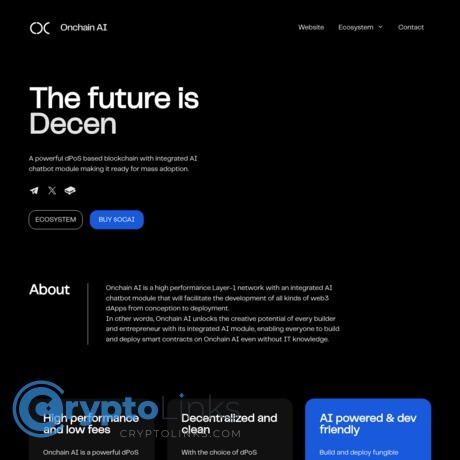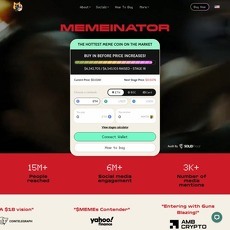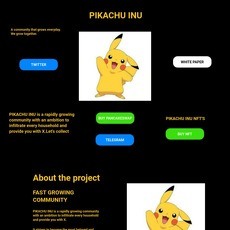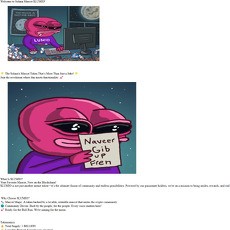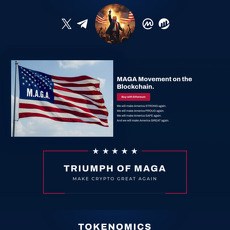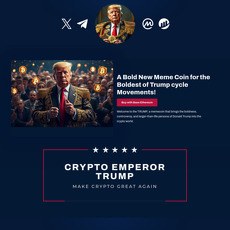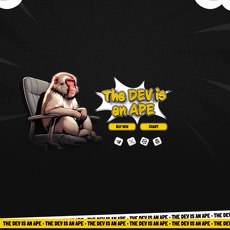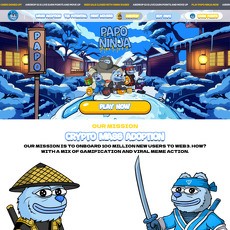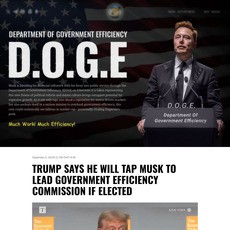Onchain AI Review
Onchain AI
onchain-ai.com
If your website is on the scam list and you think that you are not a scammer, contact us. After you provide us with all the proof that you are in Crypto World with good intentions, we will delist you. Usually, you get in this category because you are hiding your team, you have a bad reputation(you are tricking, deceiving, scamming people), and you haven't got a written project whitepaper or is a shitty one....
Their Official site text:
Documentation
Onchain AI Technical Documentation
Welcome to Onchain AI documentation, where you'll find all the information you need for your experience as a user or developer.
Introduction: What is Onchain AI?
Onchain AI is a groundbreaking fusion of blockchain and artificial intelligence, built as a high-performance Layer-1 network. Central to its architecture is an integrated AI chatbot module, which revolutionizes the way web3 dApps are conceived, developed, and deployed. What sets Onchain AI apart is its democratization of the blockchain development process: it empowers anyone, irrespective of their technical prowess, to harness the power of smart contracts on the Onchain AI network.
Why Choose Onchain AI?
1. Pioneering Blockchain and AI Fusion:
Blurring the boundaries of innovation, Onchain AI melds the transformative powers of blockchain and AI, offering users a unique solution tailored for tomorrow but made available today.
2. Performance and Cost Efficiency:
Built on the robust foundation of the dPoS consensus mechanism, Onchain AI boasts an impressive capacity to process over 120k transactions per second. Coupled with an ultra-fast blocktime of 3 seconds and negligible gas fees of under $0.001, Onchain AI stands as an epitome of scalability, primed for mass adoption.
3. Sustainability Meets Decentralization:
At its core, Onchain AI is a testament to decentralized innovation, but not at the expense of our environment. Embracing dPoS not only fortifies its decentralized nature but also ensures a minimal carbon footprint. Onchain AI embodies the vision of a green, decentralized future.
4. AI-Driven, Developer-Friendly Interface:
Unleashing creativity has never been simpler. With Onchain AI, you can conceive, design, and deploy an array of digital assets, from fungible tokens (like ERC20) to cutting-edge NFTs and sophisticated smart contracts. And the magic wand? An intuitive AI chatbot interface. Dictate your requirements, and watch as the Onchain AI Chatbot brings your vision to life, sans the complexities.
Onchain AI is not just a blockchain; by synthesizing the capacities of blockchain and AI, it beckons a future where technology serves all, erasing barriers and fostering creativity. Whether you're an entrepreneur, a visionary, or a curious individual, Onchain AI is tailored to turn your dreams into decentralized realities. Welcome to the future of blockchain, where every idea has a place, and every vision, a platform.
Onchain's AI documention is not complete and constantly being updated, with much more content to come.
Web3 AI
AI Merges with Blockchain for Builders
Table of Contents
Introduction
Expected Key Features
Wallet Connect Compatibility
Anticipated User Journey: From Concept to Deployment
Proposed Building & Deployment Process with Web3 AI
Fungible Tokens
Non-Fungible Tokens (NFTs)
dApps
Preliminary System Architecture
Projected Benefits of Web3 AI for Onchain AI Blockchain Adoption
FAQs (Pre-release edition)
Support & Upcoming Resources
1. Introduction
Set for a launch in 2024, Web3 AI by Onchain AI proposes a groundbreaking platform that combines the realms of blockchain and artificial intelligence. This state-of-the-art tool aims to provide an easy and intuitive interface for individuals to conceptualize, design, and deploy blockchain solutions on the Onchain AI network, regardless of their technical prowess.
2. Expected Key Features
User-Centric Interface: Prioritizing ease of use to cater to a broad user base.
AI-Powered Guidance: Embedding machine learning models for suggestions, optimization, and troubleshooting.
End-to-End Development Framework: Providing holistic solutions from ideation to final deployment without requiring external tools.
3. Wallet Connect Compatibility
The proposed integration with Wallet Connect is expected to:
Ensure a safe bridge between the user's digital wallet and the Web3 AI platform.
Simplify transaction authorizations.
Enhance the user experience for managing OCAI tokens and other assets.
4. Anticipated User Journey: From Concept to Deployment
Access Web3 AI: Visit the platform on the official Onchain AI website.
Sign-Up/Log-In: Securely register or log into the platform.
Wallet Integration: Seamlessly connect your digital wallet via Wallet Connect.
Project Initiation: Determine the type of project (token, NFT, dApp) and begin.
Guided Development: Rely on step-by-step guidance with AI interventions for optimization.
5. Proposed Building & Deployment Process with Web3 AI
i. Fungible Tokens:
Token Specifications: Define token attributes such as name, ticker, and supply.
Advanced Configurations: Fine-tune token properties.
AI-Driven Review: Receive insights and optimization suggestions.
Smart Contract Deployment: Autogenerated contracts get deployed onto Onchain AI.
ii. Non-Fungible Tokens (NFTs):
NFT Descriptor: Provide information and content for the NFT.
Add Metadata: Enhance with additional attributes.
Determine Editions: Single or multiple.
AI-Powered Feedback: Refine based on machine learning recommendations.
Mint & Deploy: Seamless creation and introduction to Onchain AI.
iii. dApps:
Determine Functionality: Clearly specify the dApp's purpose.
Visual Builder: Drag-and-drop interface elements.
Logic Implementation: Rely on predefined logic templates or customize further.
Test Phase: A simulated environment for verification.
Final Deployment: Introduce the dApp to the Onchain AI ecosystem.
6. Preliminary System Architecture
The underlying architecture is projected to comprise:
Frontend UI: Likely built on modern frameworks like React.js for a dynamic user interface.
AI Core: Advanced machine learning models providing recommendations and insights.
Blockchain Middleware: Handles the creation, testing, and deployment of smart contracts on Onchain AI.
Backend Services: Secure APIs and databases ensuring efficient operations and data protection.
7. Projected Benefits of Web3 AI for Onchain AI Blockchain Adoption
Web3 AI's introduction could be instrumental for Onchain AI's widespread adoption:
Ease of Onboarding: By making blockchain interaction intuitive, it attracts a diverse user base.
Code-Free Environment: Democratizing blockchain development by eliminating coding prerequisites.
Unified Wallet Experience: Direct Wallet Connect integration for efficient asset management.
Education: On-the-go learning ensures users understand their actions and implications.
Cost-Effectiveness: Direct savings by reducing external tool dependencies and expert hires.
Growing the Ecosystem: Increased user engagement and project creation could foster a vibrant Onchain AI community.
8. FAQs (Pre-release edition)
How will Web3 AI differ from other platforms? By deeply integrating AI with blockchain, Web3 AI plans to offer a unique and streamlined development experience.
What are the expected costs? Detailed pricing models will be available closer to the launch. It's anticipated that basic features will be accessible to all, with premium functionalities possibly incurring costs, payable in OCAI tokens.
9. Support & Upcoming Resources
As development progresses, a dedicated support section, comprehensive tutorials, and community forums will be established to aid users.
Web3 AI's impending release in 2024 holds the promise of reshaping how individuals interact with and leverage blockchain technology. The synergy of AI with blockchain development on the Onchain AI platform could lead to a broader, more engaged community, thereby driving adoption and fostering innovation on Onchain AI mainnet.
The following information is based on pre-release details and is subject to change as the development progresses.
Onchain AI Wallet
Onchain AI non-custodial wallet
Table of Contents
Introduction and Overview
Key Features
System Architecture
Wallet Security Measures
User Experience and Web3 Interaction
Multi-Chain Compatibility & Supported Assets
Mobile Versions: iOS and Android
Integration with DApps
Back-Up and Recovery Process
FAQs
Support & Troubleshooting
1. Introduction and Overview
The Onchain AI Wallet, currently in its developmental phase, is set to offer a seamless, self-custodial web3 wallet experience. Rooted in the Onchain AI network, it's designed not just for the native ecosystem but with compatibility in mind for other EVM-based chains.
2. Key Features
Self-Custodial: Ensuring users retain full control over their cryptographic keys.
Web3 Integration: Effortless interactions with decentralized applications.
Multi-Chain Support: Beyond Onchain AI, extendable to other EVM chains.
Intuitive Design: Streamlined UI/UX tailored for all users.
3. System Architecture
Frontend: Harnessing modern frameworks for a responsive user experience.
Wallet Core: Centrally manages key functionalities: key generation, signing transactions, and asset management.
Blockchain Middleware: Facilitates interactions with Onchain AI and other EVM chains.
Local Storage: Securely maintains encrypted wallet settings and user preferences.
4. Wallet Security Measures
Private Key Encryption: Keys remain encrypted, decrypting temporarily for transaction signing.
Biometric & Face ID Integration: An added layer of security for mobile versions.
PIN & Password Guard: Protects against unauthorized access.
Session Management: Features like auto-logout after periods of inactivity.
Secure Protocols: Uses HTTPS for safe web interactions.
5. User Experience and Web3 Interaction
Access: Via the official Onchain AI wallet website.
Initialization: Options to set up a new wallet or import an existing one using a mnemonic seed.
Dashboard: View and manage assets, transactions, and more.
Web3 Actions: Smoothly connect with dApps, verify transactions, and oversee other web3 tasks.
Asset Management: Send, receive, and track asset movements.
6. Multi-Chain Compatibility & Supported Assets
Onchain AI Tokens: Native support for OCAI and associated tokens.
NFTs: Designed to cater to a myriad of NFT standards in the Onchain AI landscape.
EVM Chains: Versatile support extends to tokens and assets from other EVM chains.
Web Compatibility: Optimized for all major browsers.
7. Mobile Versions: iOS and Android
Native Apps: Dedicated applications designed for both iOS and Android platforms.
Feature Parity: All features available in the web version will translate seamlessly to the mobile versions.
Optimized User Interface: Tailored for smaller screens while maintaining usability and clarity.
Marketplace Integration: Direct integration with Apple App Store and Google Play Store for easy updates and downloads.
8. Integration with DApps
Web3 Provider: Ensures the wallet can effortlessly tether to web3-compatible dApps.
Permission Management: Users control which dApps can interact with their wallet.
Transaction Notifications: Real-time feedback on transaction statuses from dApps.
9. Back-Up and Recovery Process
Mnemonic Seed: A 12-word phrase generated during setup, critical for future wallet recovery.
Encouraged Offline Storage: Users are prompted to store the seed offline in secure locations.
Restoration Capability: Using the mnemonic seed, users can recover and initialize their wallet on any device.
10. FAQs
How does the Onchain AI Wallet differentiate from competitors? With native integration in the Onchain AI ecosystem, combined with broad EVM-chain compatibility, it offers an unmatched, versatile experience.
Will there be regular updates post-release? Yes, consistent updates are planned post-launch to introduce new features, improve security, and ensure compatibility with evolving tech.
11. Support & Troubleshooting
Tutorial Library: Comprehensive guides and walkthroughs for all wallet functionalities.
Community Forum: A space for users to share experiences, address common issues, and share feedback.
Support Desk: A dedicated team on standby to aid with any technical challenges or questions.
The Onchain AI Wallet, through its array of features and multi-chain compatibility, is strategically positioned to serve as a key gateway into the world of decentralized finance and applications. It will be launched in 2024.
Onchain AI Wallet alpha version is scheduled for release in the first quarter of 2024.
Technical Overview
Technical Information
1. Introduction
Onchain AI is a pioneering blockchain platform tailored to integrate artificial intelligence within a decentralized environment. This documentation delves into its architecture, EVM compatibility, testnet phase, consensus mechanism, and much more.
2. Architecture Overview
Onchain AI is structured to fuse AI functionalities seamlessly within the decentralized sphere, empowering developers to construct and deploy AI-integrated solutions on the blockchain.
3. Consensus Mechanism: Delegated Proof-of-Stake (dPoS)
The Onchain AI platform uses dPoS as its consensus mechanism, emphasizing speed, security, and energy efficiency. Within dPoS, delegates, elected by the community, are tasked with producing blocks and validating transactions.
4. EVM Compatibility
Onchain AI boasts EVM compatibility, which means it's capable of executing Ethereum-based smart contracts. This facilitates a smooth experience for developers transitioning from Ethereum or other EVM-compatible platforms.
5. Wallet Support
Onchain AI supports a broad spectrum of self-custodial wallets, including but not limited to:
Metamask
Trust Wallet
Coinbase Wallet
Safepal
Onchain AI Wallet
These wallets allow users to manage OCAI tokens, interact with smart contracts, and seamlessly connect with the Onchain AI environment.
6. Validators
In dPoS, validators are pivotal. These entities are responsible for the production of blocks and the validation of transactions on the Onchain AI network. Their chief roles encompass:
Block production
Transaction validation
Securing the network's integrity
Protocol updates when necessary
7. Setting Up a Validator Node on Mainnet
Pre-requisites:
Hardware:
CPU: Minimum quad-core processor 4 vCPU
RAM: At least 8GB
Storage: Minimum 80GB SSD
Steps:
Software Installation: Download the latest Onchain AI Node software from the official repository.
Configuration: Modify the config.toml to set:
Node identity
Network parameters
Consensus rules
Connect to OCAI Mainnet: Provide the Chain ID (xxxxxx) and the RPC URL.
Stake OCAI Tokens: From 100,000.00 to 1,000,000.00 OCAI tokens must be staked to qualify as a validator, ensuring they have skin in the game.
Run the Node: Initiate the Onchain AI Node software. Upon connection, it will synchronize with the mainnet.
Monitoring: Regularly check the node's performance and update the software when necessary for peak performance and security.
8. Deploying Smart Contracts on Onchain AI
Using Remix:
Access: Navigate to .
Load Contract: Input your Solidity contract and ensure the compiler version matches your contract.
Compile: Use the Solidity Compiler tab for compilation.
Connect: In the Deploy & Run Transactions tab, choose Injected Web3 to connect to Onchain AI using a compatible web3 wallet.
Deploy: Select your contract, provide constructor arguments if necessary, and deploy. Confirm the deployment via your wallet.
Interact: Post-deployment, use Remix for contract interactions or check it on .
9. Onchain AI Testnet
Key Details:
Testnet Name: OCAI Testnet
Testnet Chain ID: 939472
Testnet URL RPC:
Testnet Token Ticker: OCAI
Testnet Explorer URL:
Claim OCAI Testnet Token:
Faucet:
The OCAI Testnet offers a sandbox environment for developers and enthusiasts to test, develop, and deploy applications without real-world repercussions.
10. Onchain AI Mainnet
Key details:
Name: Onchain AI or OCAI
Ticker: $OCAI
Chain ID: 33698
RPC:
Explorer:
For collaborations, updates, or inquiries, please or access our .
Note: Always ensure information is cross-verified with official Onchain AI sources prior to initiating any activities. Further updates will be provided as the platform progresses.
Bridge to Onchain AI
Migrate to the Onchain AI Mainnet
To bridge to Onchain AI, first you need to add Onchain AI on your Metamask (you can do so following )
Once you're ready please go on and connect your wallet by clicking on the Connect button.
Click on "Select currency" and choose OCAI.
You should see something like this, confirming that you are going to bridge from Ethereum to Onchain Mainnet:
Enter the amount you want to bridge and then click on the "Approve" button. Make sure you're approving with the default and not inputting the max amount.
You have to wait and confirm the transaction on your Metamask and wait until you see this:
If you do not see this 'Approved' button, please refresh your browser and select OCAI again.
Click on Next, then Confirm, it will open another transaction to confirm on your Metamask. Wait a moment and you should receive your OCAI on Onchain AI Mainnet. You can check the balance of your wallet on the Onchain AI explorer here:
For bridging from Onchain AI to Ethereum, you can do the same thing, directly from:
Becoming a Validator
Be a part of Onchain AI.
Pre-requirements
In order to be a OCAI validator, you first must see that you meet the pre-requirements:
You know what it means to be a OCAI validator - .
You have at least 100K OCAI tokens or you will have an aggregated delegation of at least 100K OCAI tokens (you can purchase OCAI token on ).
You have an always-on hardware that meets the pre-requisites -
Pre-requisites:
Hardware:
CPU: Minimum quad-core processor 4 vCPU
RAM: At least 8GB
Storage: Minimum 80GB SSD
How to become a OCAI validator
To quickly become a validator, follow this steps:
Step 1: Download the `quickstart.sh` script and an `.env` example file:
mkdir OCAI-validator
cd OCAI-validator
wget -O quickstart.sh https://raw.githubusercontent.com/OCAI/master/scripts/quickstart.sh
chmod 777 quickstart.sh
wget -O .env https://raw.githubusercontent.com/OCAI/master/scripts/examples/.env.validator.example
Step 2: Update the `.env` file:
set "sudo" on `PERMISSION_PREFIX` if running docker/docker-compose requires root
set `<YOUR_API_KEY>` to your infura api key on `FOREIGN_RPC_URL`
(or replace entirely with your Ethereum mainnet rpc endpoint)
Step 3: Run the script as a validator:
./quickstart.sh
{% hint style="success" %} After running the script successfully, you will see your address in the site. {% endhint %}
Step 5: Stake and/or delegate!
Stake
To stake OCAI tokens, all you should do is send your OCAI tokens to the OCAI Consensus contract address over the OCAI network from the validator address.
{% hint style="success" %} The OCAI Consensus contract address: 0x01fC95436255bc74A234cE36a280aD3815e5A9A8 {% endhint %}
The easiest way to do so, is to import your private key or key-store file to your favourite wallet (for example Metamask), switch network to OCAI and send the OCAI tokens (native tokens) to the Consensus contract address.
{% hint style="info" %} You can find your key-store (containing your private key) and the password for the created account in:
$HOME/ocainet/config/keys/OCAINetwork/UTC--xxxx
$HOME/ocainet/config/pass.pwd {% endhint %}
Delegate
To delegate, just send the OCAI tokens from any address to the Consensus contract address with the data: 0x5c19a95c000000000000000000000000<address without 0x>.
{% hint style="success" %} Example:
For the address: 0xb8ce4a040e8aa33bbe2de62e92851b7d7afd52de
Use: 0x5c19a95c000000000000000000000000b8ce4a040e8aa33bbe2de62e92851b7d7afd52de as the data.
5c19a95c is for the delegate(address) function signature.
b8ce4a040e8aa33bbe2de62e92851b7d7afd52dein this example is an address you're delegating to (without the 0x prefix) {% endhint %}
Step 6: Wait for 1 cycle (approximately 48 hours).
Wait until the next cycle is started.
{% hint style="success" %} You can see that you are validating both in the site and on the site. {% endhint %}
For live support, contact us on . Good luck and happy validating!
Build on Onchain AI
For the Builders
Given the EVM compatibility of Onchain AI, deploying smart contracts to the platform is straightforward for developers familiar with Ethereum's ecosystem. One of the most widely used tools for this purpose is . Below, you'll find a guide on deploying smart contracts on Onchain AI using Remix.
Prerequisites:
A smart contract written in Solidity.
The Onchain AI Wallet or a compatible web3 wallet with OCAI tokens on the testnet or mainnet.
Familiarity with Remix and its interface.
Deployment Process:
1. Access Remix:
Open your web browser and navigate to .
2. Load Your Smart Contract:
Click on the + button (located top-left) to create a new file, then paste your Solidity code. Ensure that the compiler version in Remix matches the one specified in your smart contract.
3. Compilation:
Navigate to the Solidity Compiler tab.
Click on the Compile button.
After successful compilation, any warnings or errors will be displayed. Address them before deploying.
4. Connect to Onchain AI:
Move to the Deploy & Run Transactions tab.
From the Environment dropdown, select Injected Web3. This option leverages the web3 provider injected by your Onchain AI Wallet (or a compatible wallet).
Confirm that Remix now displays the correct network (OCAI Testnet) and your account address.
5. Deploy:
Select the contract you wish to deploy from the Contract dropdown.
If your contract has a constructor that requires arguments, provide them.
Click on the Deploy button.
A confirmation window from your wallet will appear. Confirm the transaction details and gas fee, then approve the transaction.
6. Contract Interaction:
Once deployed, your contract will be listed under the Deployed Contracts section in Remix. Here, you can interact with your contract's functions directly.
7. Verification:
To verify your smart contract and see its details, head over to the Onchain AI Testnet Explorer at . Input your contract's address to view transactions, function calls, and other associated details.
Deploying smart contracts to Onchain AI using Remix provides a familiar and efficient process for developers. Thanks to the EVM compatibility of Onchain AI, the transition for developers from Ethereum or other EVM-compatible chains is seamless.
Roadmap
The future is Onchain
Quarter 3, 2023
$OCAI token launch (public sale and listing on Uniswap)
Launch marketing
Listing Coingecko
Listing Coinmarketcap
Onchain AI testnet
Onchain AI testnet explorer
Testnet marketing
Quarter 4, 2023
Onchain AI mainnet
Onchain AI explorer
Onchain AI staking
Developer's documentation
Mainnet marketing
Strategic partnerships
Bridge and protocols integration
$OCAI 1st CEX listing
Quarter 1, 2024
Onchain AI Wallet
Onchain AI Labs launch
Grant program
Web3 AI alpha release
Web3 AI test phase
Web3 AI marketing
During 2024
Web3 AI 1.0 version release
Web3 AI mobile app release on iOS/Android
Enabling Onchain AI network adoption
Web3 AI pricing model launch
More CEX listing
Expansion marketing

